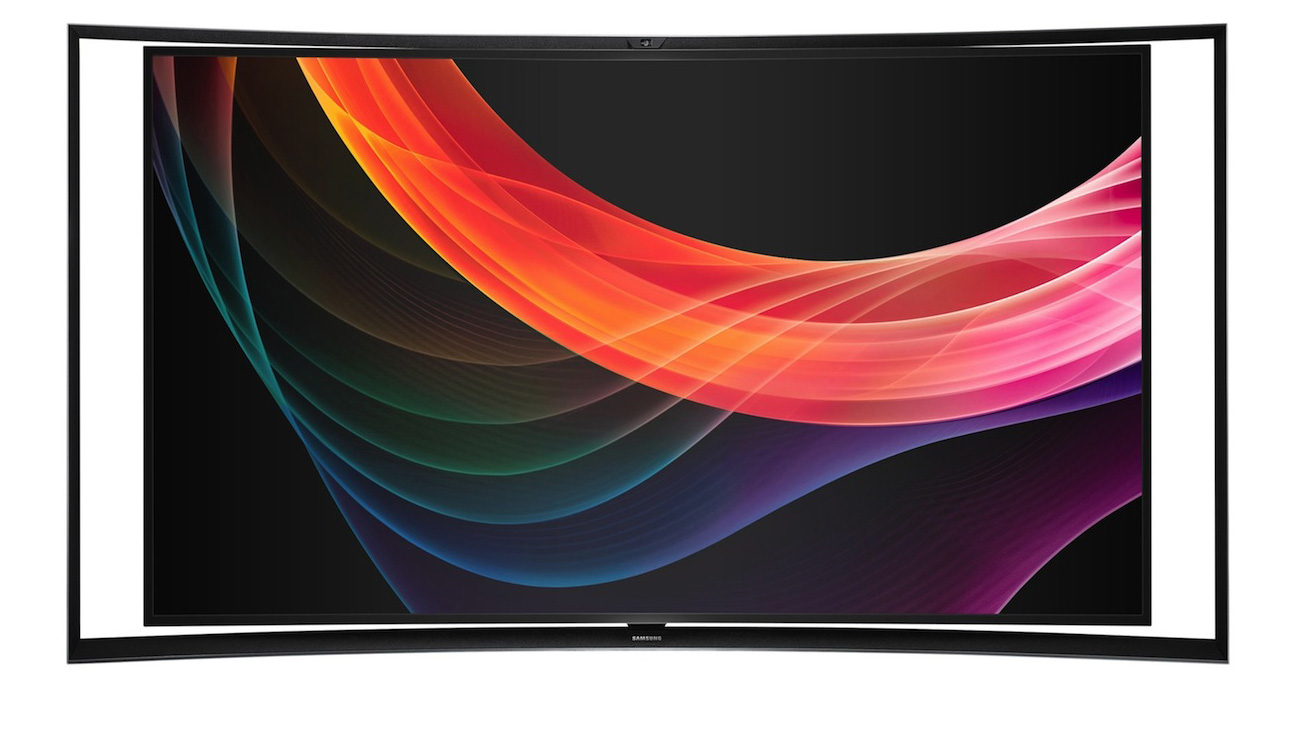Early Verdict
Pros
- +
Beautiful OLED
- +
Looks great
Cons
- -
Why curved?
- -
Expensive
Why you can trust TechRadar
Better known as the S9C Curved, this quad-core 55-incher is one of the few OLED screens likely to go on sale. But is a Full HD resolution enough for it to compete with the bevy of Ultra HD TVs launched at IFA 2013?
We're not convinced those after the very best in AV should have to chose between Ultra HD and OLED, but that's exactly what the KE55S9CSL does – but it throws a swerve-ball.
Underneath one of the several KE55S9CSL's on the show floor there is a sign that reads, "The surrounding vision that Curved TVs present gives extremely immersive experience as if you are in that scene." Well, boys and girls, it doesn't do that. It doesn't do that at all, but that doesn't mean we don't like the KE55S9CSL.
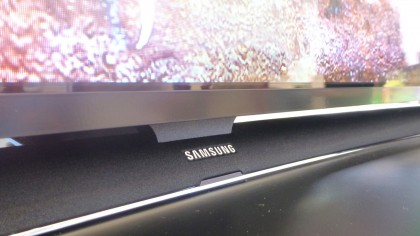
Our positive impressions are partly to do with the fact that there isn't much of a curve to the screen at all. This is a TV that's all about design and brilliant picture quality, and not much about the curve at all.
Let's start with the design, which is an echo of the S9 Series of absolutely massive TVs that have graced exhibitions and a couple of London-based stores over the past year or so. The latest additions to that range – a 98-inch and 110-inch – are being demoed just yards from the KE55S9CSL.
Design
The KE55S9CSL is the smallest of the lot – but it's also the most impressive. Already priced at £6,999, its so-called Timeless Arena Design consists of a frame around the screen that supports it at the centre, but it's here that the curve is used most prominently. The curve is mostly in the stand and though it accentuates the screen's curve, that's slight indeed. It's hardly curved at all, and certainly not as much as the curved screens on LG's stand.
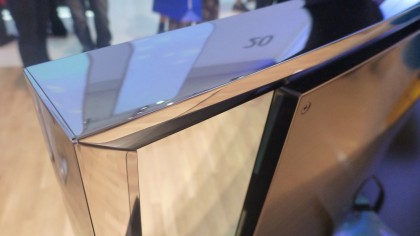
It is, however, a beautiful frame in its own right, with angular, sharp-edged mirror-like surfaces mimicking a picture frame, with the inside edge lined with inward-facing speakers. Where the TV joins to the stand at the top there's a Skype camera positioned, while directly below the Samsung logo on the bottom is another pivot. The bezel on the panel itself is about 10mm across, with another 5mm or so of black space to the edge of the image.
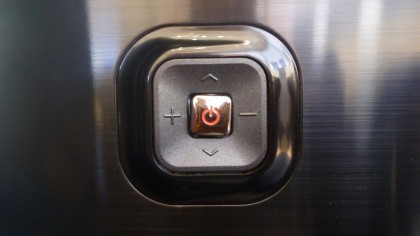
The rear of the KE55S9CSL is brushed metallic, with covers that completely hide the ins and outs. However, it's not super-slim; the panel itself is thin, but a support on the rear juts out about 20cm in the centre. Sloping backward at a very slight angle, the KE55S9CSL looks an absolute picture.
Performance
The OLED panel itself is Full HD resolution, which is actually quite hard to look at after a week of quickly getting used to 4K resolution screens. Consequently, images do seem a bit soft and pixellated, though stand back and you get the full effect of OLED: fluid, life-like images that don't judder or blur. The colours are ballistically bright, which we'd expect on a show floor like this, especially, though it's the deep, textured blacks that mark this image out as something special.
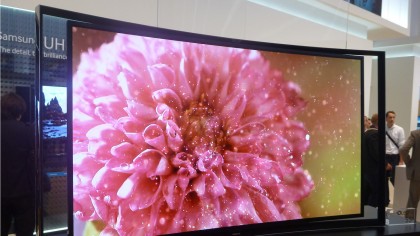
The viewing angle is excellent, though there are a lot of reflections when viewed from the wings, something that's not helped by the curve. Despite the luscious OLED images, we can't get over the jagged edges – visible particularly around graphics and bright colours – and a touch of solarisation in colours. The KE55S9CSL is great as long as you don't get too close.
We were watching in 2D, though the KE55S9CSL is fitted with the active shutter 3D system. It also comes with the rest of Samsung's 2013 arsenal of features, including Smart Interaction (voice and gesture control), S-Recommendation, Smart Hub and twin Freeview HD tuners.
Early verdict
The best-looking and most reasonably-priced show-off TV from Samsung yet, the KE55S9CS isn't about curves but rather design and image quality.
The latter is mind-blowingly good for a Full HD screen, and the former is both a design-statement-and-a-half and a very clever way to keep – and even improve – sound quality in the coming days of OLED domination. However, will anyone want an OLED TV – curved or otherwise – when the same £6,999 can be spent on a mightily good Ultra HD?
Jamie is a freelance tech, travel and space journalist based in the UK. He’s been writing regularly for Techradar since it was launched in 2008 and also writes regularly for Forbes, The Telegraph, the South China Morning Post, Sky & Telescope and the Sky At Night magazine as well as other Future titles T3, Digital Camera World, All About Space and Space.com. He also edits two of his own websites, TravGear.com and WhenIsTheNextEclipse.com that reflect his obsession with travel gear and solar eclipse travel. He is the author of A Stargazing Program For Beginners (Springer, 2015),
What is a hands on review?
Hands on reviews' are a journalist's first impressions of a piece of kit based on spending some time with it. It may be just a few moments, or a few hours. The important thing is we have been able to play with it ourselves and can give you some sense of what it's like to use, even if it's only an embryonic view. For more information, see TechRadar's Reviews Guarantee.
